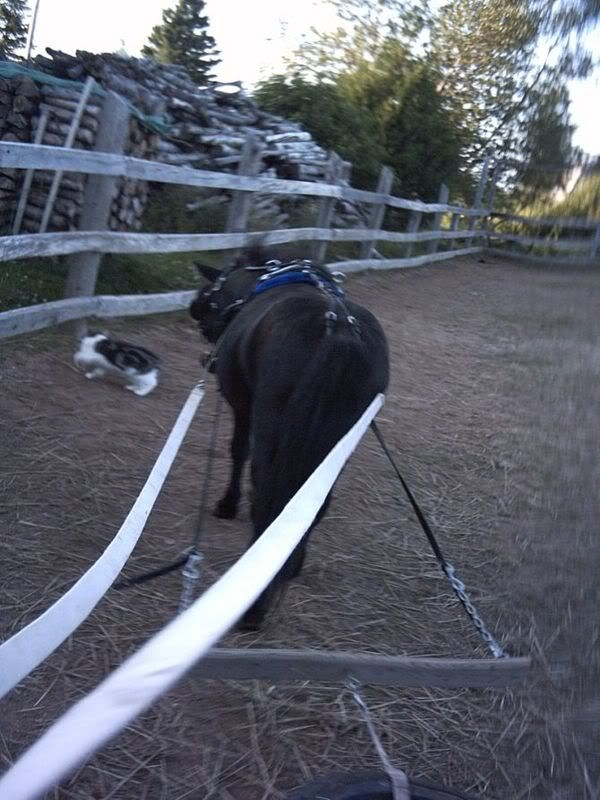HoneyPie
Member
- Joined
- Apr 3, 2012
- Messages
- 16
- Reaction score
- 0
I have a couple questions about hooking a drag tire to the horse. How are the traces attached to the tire rope? (pics would thrill me immensely) do you use your regular driving harness? How far away from horse do you place the tire? I have light weight PVC training shafts that I drive him in but they offer no weight resistance and attach to the saddle. I was spoiled by my first two driving horses because they went from training shafts to cart like old pros but this gelding needs some confidence building before going to cart.
Next question is about an energetic trotter. My current project walks in the drive lines beautifully, stops and stands great, gives easy to the bit, and isn't spooky about anything! The trot is a different story! I ask him for the trot in the long lines or ground driving and he's like "ahhhhhh! Your trying to chase me down and eat me!!!!" I definitely don't want to be hanging on his mouth to slow him down! I have taught him vertical and lateral flexion, he is soft and supple at the walk,but he throws up his head, hollows his back, and moves out ninety miles an hour when I ask for a trot. He is eight years old and we have had him a little over a year. He is well broke to ride for children but was rode in a hackmore so I had to train to the bit. He was resistant to a smooth snaffle initially but I found a French link that he is happy with.What can I do to help him relax when trotting and not send him into flight mode without being in his mouth? He does this when free longing in the round pen too. Any time he asked to trot he raises his head, hollows his back, and heads out in an erratic trot.
My first two drivers I trained were so soft and required little bit movement to encourage a rounded frame and speed control. This boy is going to be my challenge but I am looking forward to it!
Thanks in advance for your advice!
Next question is about an energetic trotter. My current project walks in the drive lines beautifully, stops and stands great, gives easy to the bit, and isn't spooky about anything! The trot is a different story! I ask him for the trot in the long lines or ground driving and he's like "ahhhhhh! Your trying to chase me down and eat me!!!!" I definitely don't want to be hanging on his mouth to slow him down! I have taught him vertical and lateral flexion, he is soft and supple at the walk,but he throws up his head, hollows his back, and moves out ninety miles an hour when I ask for a trot. He is eight years old and we have had him a little over a year. He is well broke to ride for children but was rode in a hackmore so I had to train to the bit. He was resistant to a smooth snaffle initially but I found a French link that he is happy with.What can I do to help him relax when trotting and not send him into flight mode without being in his mouth? He does this when free longing in the round pen too. Any time he asked to trot he raises his head, hollows his back, and heads out in an erratic trot.
My first two drivers I trained were so soft and required little bit movement to encourage a rounded frame and speed control. This boy is going to be my challenge but I am looking forward to it!
Thanks in advance for your advice!













































